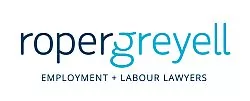- within Employment and HR topic(s)
- with Senior Company Executives, HR and Finance and Tax Executives
- in Canada
- with readers working within the Accounting & Consultancy, Business & Consumer Services and Consumer Industries industries
Previously printed in the LexisNexis Labour Notes Newsletter.
In Homewood Health Inc. (Homewood Ravensview), 2024 BCLRB 87, the B.C. Labour Relations Board (the "Board") dismissed an application under sections 6(1), 6(3)(d) and 9 of the B.C. Labour Relations Code (the "Code"). The Board found that the Employer's communications to its employees after receiving notice of the Union's certification application did not contravene the Code.
Shortly after learning that the B.C. Nurses' Union had filed a certification application in respect of its mental health and addictions treatment centre, the Employer sent a pair of memorandums to the personal e-mail addresses of its employees.
The Union took issue with the memorandums and, in particular:
- delivery to the personal e-mail addresses of the employees;
- the reference to LabourWatch.com; and
- certain impugned statements as detailed below.
Delivery to Personal E-mail Addresses
The Board found that the delivery to the employees' personal e-mail addresses was permissible because it gave employees the choice to read or delete the memorandums without compulsion to read them.
Reference to LabourWatch.com
In one of the memorandums, the Employer stated, in part:
"If you wish, you can also get information from the website Labourwatch.com which provides information to employees on this type of issue."
The Board rejected the Union's argument that the Employer endorsed the views of LabourWatch.com simply by directing interested employees to that site.
Impugned Statements
The memorandums included numerous statements challenged by the Union, each of which the Board found to be permissible.
Several of the statements are detailed below.
The "Union Dues" Statement:
"Having a union means having to pay union dues – money taken off your pay cheques. If a union and collective agreement is in place, union dues must be paid by all employees, not just those who supported them. Union dues usually amount to about one week's pay each year."
The Board stated that comments relating to union dues do not concern an employer's business and therefore are not protected by section 8 of the Code. However, the Board continued that employer communications not protected by section 8, such as this one, may nonetheless be permissible if they are non-coercive, factual and accurate.
Similarly, the Board rejected the Union's argument that the statement was contrary to section 9 of the Code because it would lead a reasonable employee to question the Union's motives.
The "Employer Disappointment" Statement:
"While we are disappointed if some of you feel you need a union to represent you, we of course respect the process."
The Board found that this was a non-coercive statement about the Employer's business. It was protected under section 8 and not intimidating or coercive. There was therefore no breach of sections 6(1), 6(3) or 9 of the Code.
The "Merits of Unionization" Statements:
"Unions often make big promises to get you to vote for them ... Everything would be up for negotiation, including the things you have now."
"There are very few things that must be in a collective agreement/contract – the mandatory deduction of union dues being one. Most of the rest is up for negotiation."
The Union argued that it was simply not true that "everything would be up for negotiation". The Board acknowledged that the Employer's statement was not technically accurate but was not persuaded that the statement was sufficiently misleading to amount to a contravention of the Code.
Takeaways
A memorandum to employees following an application for certification and prior to a vote for certification can be an important tool for employers. That communication must, however, be carefully crafted to avoid any contravention of the Code.
The entirety of the employer's communication will be considered to understand the context of specific statements.
The content of this article is intended to provide a general guide to the subject matter. Specialist advice should be sought about your specific circumstances.


